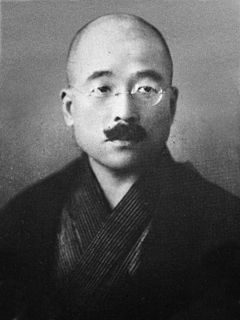 W
WHatazō Adachi was a general in the Imperial Japanese Army during World War II.
 W
WKorechika Anami was a general in the Imperial Japanese Army during World War II who was War Minister during the surrender of Japan.
 W
WThe Byakkotai was a group of around 305 young teenage samurai of the Aizu Domain, who fought in the Boshin War (1868–1869) on the side of the Tokugawa shogunate.
 W
WIsamu Chō was an officer in the Imperial Japanese Army known for his support of ultranationalist politics and involvement in a number of attempted coup d'états in pre-World War II Japan.
 W
WChujiro Hayashi , a disciple of Mikao Usui, played a major role in the transmission of Reiki out of Japan and for turning it into a less mystical practice.
 W
WGeneral Baron Shigeru Honjō was a general in the Imperial Japanese Army during the early period of the Second Sino-Japanese War. He was considered an ardent follower of Sadao Araki's doctrines.
 W
WIinuma Sadakichi was a Japanese samurai of the Aizu domain. He lied about his age to join the military, and was assigned to the Byakkotai division - essentially a reserve division of young teenagers only meant to be deployed in emergency. He was the sole survivor of group after the Byakkotai committed suicide on Iimori Hill during the Battle of Aizu. Iimori Hill overlooked the Aizuwakamatsu Castle and they thought the flames meant their lord Matsudaira Katamori and families were deceased. Thus they committed seppuku to demonstrate defiance. The events were not widely known at the time due to the victorious Imperial army not wishing to glorify rebels.
 W
WIsao Inokuma was a judoka. He won a gold medal in the heavyweight division at the 1964 Summer Olympics in Tokyo and a world title in 1965.
 W
WChikahiko Koizumi was a Japanese military physician.
 W
WYukio Mishima , born Kimitake Hiraoka , was a Japanese author, poet, playwright, actor, model, Shintoist, nationalist, and founder of the Tatenokai , an unarmed civilian militia. Mishima is considered one of the most important Japanese authors of the 20th century. He was considered for the Nobel Prize in Literature in 1968, but the award went to his countryman and benefactor Yasunari Kawabata. His works include the novels Confessions of a Mask and The Temple of the Golden Pavilion , and the autobiographical essay Sun and Steel . Mishima's work is characterized by "its luxurious vocabulary and decadent metaphors, its fusion of traditional Japanese and modern Western literary styles, and its obsessive assertions of the unity of beauty, eroticism and death".
 W
WKunio Nakagawa was the commander of Japanese forces which defended the island of Peleliu in the Battle of Peleliu which took place from 15 September to 27 November 1944. He inflicted heavy losses on attacking U.S. Marines and held Peleliu Island for almost three months. On the evening of 24 November, after the battle was lost, he performed seppuku in the tradition of Japanese samurai warriors. He was posthumously promoted to lieutenant general.
 W
WSeigō Nakano was a journalist and politician in Imperial Japan, known primarily for involvement in far-right politics through leadership of the Tōhōkai party, as well as his opposition to Tōjō Hideki and eventual suicide under murky circumstances.
 W
WCount Nogi Maresuke , also known as Kiten, Count Nogi, was a Japanese general in the Imperial Japanese Army and a governor-general of Taiwan. He was one of the commanders during the 1894 capture of Port Arthur from China. He was a prominent figure in the Russo-Japanese War of 1904–05, as commander of the forces which captured Port Arthur from the Russians.
 W
WHideyoshi Obata was a general in the Imperial Japanese Army in World War II.
 W
WTakijirō Ōnishi was an admiral in the Imperial Japanese Navy during World War II who came to be known as the father of the kamikaze.
 W
WSaigō Takamori (Takanaga) was a Japanese samurai and nobleman. He was one of the most influential samurai in Japanese history and one of the three great nobles who led the Meiji Restoration. Living during the late Edo and early Meiji periods, he later led the Satsuma Rebellion against the Meiji government. Historian Ivan Morris described him as "the quintessential hero of modern Japanese history".
 W
WYoshitsugu Saitō was a lieutenant general in the Imperial Japanese Army during World War II. He commanded Japanese forces during the Battle of Saipan and killed himself during the battle.
 W
WMitsuru Ushijima was a Japanese general who served during the Second Sino-Japanese War and World War II. He was the commanding general of the 32nd Army, which fought in the Battle of Okinawa during the final stages of the war. Ushijima's troops were defeated, and at the end of the battle he committed suicide.